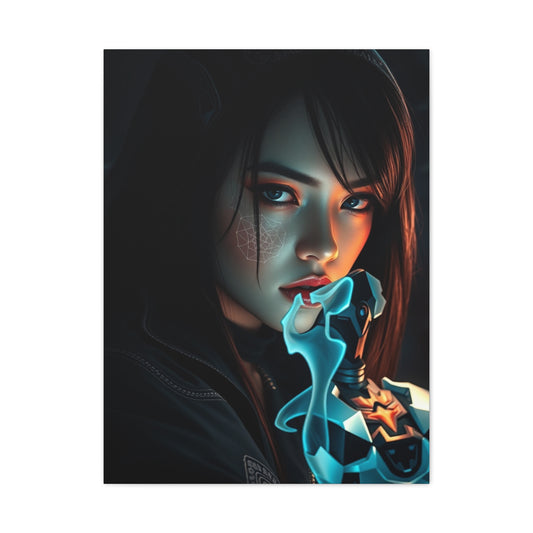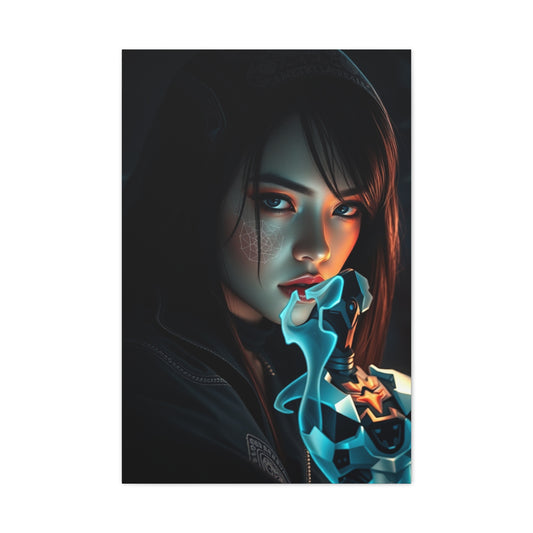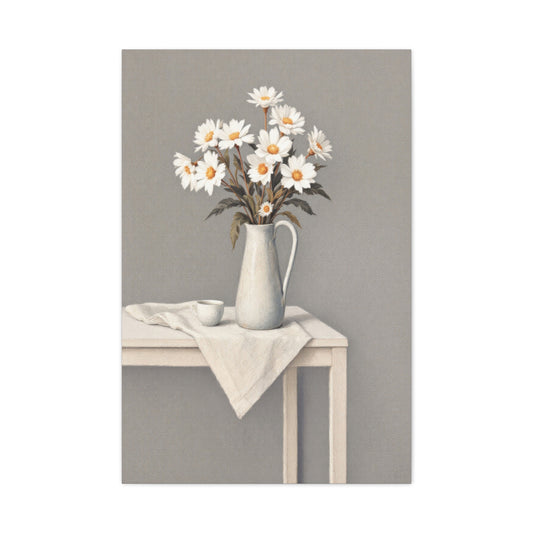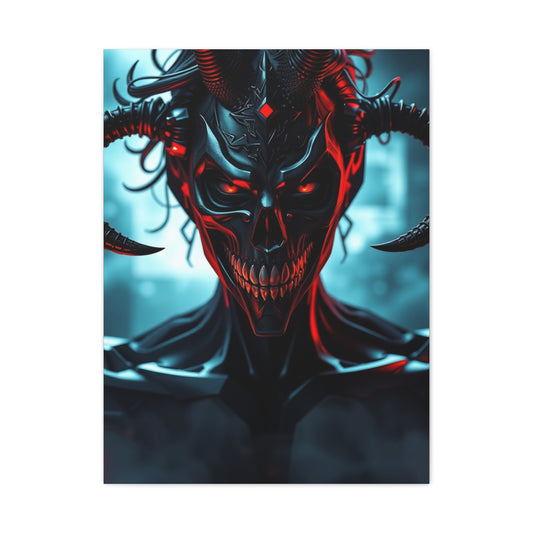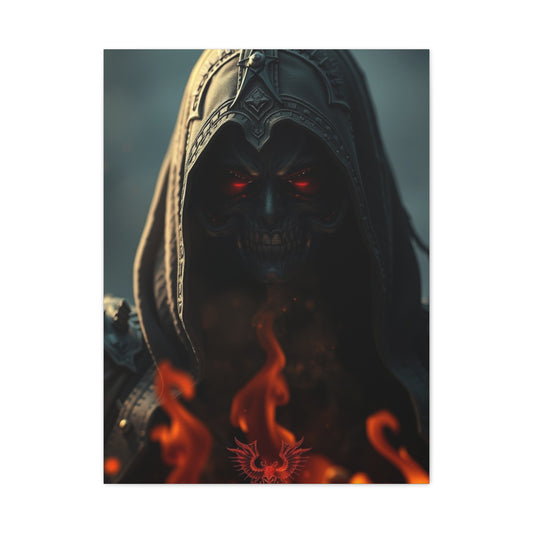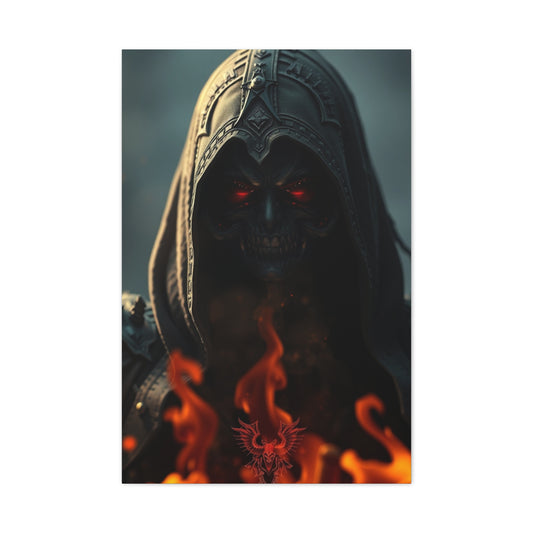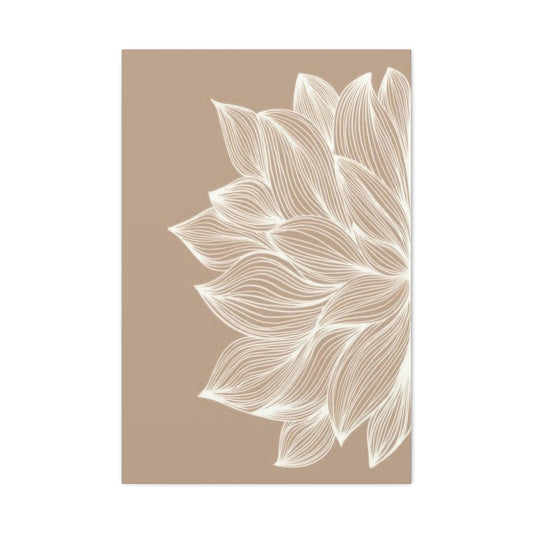Photography is an art form that has historically been associated with male photographers, but women have significantly contributed to its development, creating compelling and visionary works that have shaped the visual culture we know today. Despite the ongoing challenges in a male-dominated industry, countless female photographers have managed to carve out their own spaces, leaving a lasting legacy. Their work continues to inspire and captivate audiences across the globe, showcasing a diverse range of perspectives and artistic visions.
In this article, we delve into the lives and works of 25 extraordinary female photographers whose creativity and innovation have significantly impacted the photography world. These women, with their distinctive styles and artistic brilliance, have revolutionized the way we view the world through the lens of a camera. Here’s an exploration of their pioneering contributions to the art of photography, which continues to inspire and influence future generations.
1. Nan Goldin
Nan Goldin, born on September 12, 1953, is a renowned American photographer whose work has become a touchstone for contemporary portraiture and documentary photography. Goldin’s raw, candid approach to documenting the intimate and complex aspects of human relationships has garnered her significant recognition in the art world. Her style emphasizes a deeply personal narrative, capturing vulnerability, raw emotion, and moments of human fragility that traditional photography often avoids.
Goldin's most iconic work, The Ballad of Sexual Dependency, is a powerful collection of images that reflect the diverse and often tumultuous nature of relationships. Created between 1979 and 1986, the series documents intimate moments of love, pain, joy, and suffering, especially in the context of gender identity, sexuality, and domesticity. The series stands out for its unflinching portrayal of these raw moments, with an almost diaristic quality that adds authenticity to the work. Goldin's use of available light, often in dimly lit spaces, further amplifies the intimacy and realism of her images, making them feel almost like personal memories shared with the viewer.
|
Related Catagories: |
In Goldin's work, themes of love, gender, sexuality, and the fragility of relationships are ever-present. Her focus on marginalized communities—such as those living with HIV, those navigating gender and sexual identity, and individuals struggling with addiction—has made her a prominent voice for social change in the arts. Goldin’s photographs are often more than just visual narratives; they are vehicles for social commentary, pushing the boundaries of what is considered acceptable in both art and society. Her images do not merely capture people in their most vulnerable moments; they challenge the viewer to reconsider societal norms surrounding love, identity, and what it means to be human.
Goldin’s work, often presented as slideshows or projections rather than typical print exhibitions, offers a unique viewing experience that emphasizes the fluid, dynamic nature of her images. Through this approach, her photographs transcend static portraits and become an evolving, immersive narrative that engages the audience on an emotional level. Her contributions to the photography world continue to resonate today, and her unrelenting honesty has made her a revered figure in contemporary art.
2. Corrine Day
Corrine Day (February 19, 1962 – August 27, 2010) was a British photographer who revolutionized the fashion photography industry with her unfiltered, raw approach to capturing models and fashion. Before venturing into photography, Day had a brief career as a model, which led to her unique perspective on the world of fashion. Day’s work broke away from the polished, glamorous portrayals of models that were typical of the fashion industry in the late 1980s and early 1990s. Instead, she sought to create more genuine, authentic portrayals of women, focusing on vulnerability and real-world beauty rather than idealized perfection.
One of Day's most notable contributions to the photography world was her work with a young Kate Moss, whom she photographed in her teens. Day’s series of photographs of Moss were some of the first to depict the model in a candid, unstyled manner, a stark contrast to the typical fashion photography of the time. This raw, unvarnished approach made a significant impact on the fashion world, marking the beginning of Moss's career and challenging the industry's standards of beauty.
As Day’s career progressed, she transitioned from fashion photography to documentary photography, where she began to explore more personal and intimate subjects. She documented the lives of her friends, particularly their struggles with addiction and the impact of drugs on their lives. Day’s ability to capture these moments with such honesty and vulnerability revealed a different side of the human experience, one that is often hidden in mainstream media. Her personal battles, including her diagnosis with a brain tumor, also influenced her later work, which focused more on the intersection of personal experience and larger societal issues. Day’s work is celebrated not only for its powerful visual impact but also for its ability to highlight the humanity of her subjects, making them more than just photographic subjects but real, complex individuals.
3. Sophie Calle
Sophie Calle (born October 9, 1953) is a French artist and photographer known for her unique conceptual approach to photography and her exploration of human vulnerability, intimacy, and the boundaries between public and private life. Calle’s work often blurs the lines between the personal and the artistic, creating art that challenges the viewer to question their assumptions about privacy, identity, and relationships.
One of Calle’s most well-known projects is The Hotel, which she undertook in 1981 while working as a chambermaid at a hotel in Venice. In this series, she photographed the personal belongings of the hotel guests, creating an intriguing narrative about the lives of these individuals based solely on the objects they left behind. Calle’s exploration of the concept of surveillance and the ethical considerations of observing others without their knowledge is a hallmark of her work. By using these objects to tell a story about the guests' lives, Calle’s images provoke questions about the boundaries of privacy and the ethics of artistic exploration.
Her work often engages with themes of identity and intimacy, and she has continued to explore these ideas throughout her career. Whether documenting her own experiences, such as following a man around Venice in a project titled The Address Book, or exploring the intimate lives of strangers, Calle’s photography challenges the viewer to confront the nature of human interaction and the vulnerability that comes with exposure. Her ability to blend narrative, concept, and identity has made her an influential figure in the contemporary art world. Calle’s work continues to spark debate and discussion, as her photography offers a nuanced, multi-layered approach to understanding the complexities of human relationships.
4. Gillian Wearing
Gillian Wearing (born December 10, 1963) is a British conceptual artist whose work spans photography, video, and text. Wearing’s photography often focuses on themes of identity, self-expression, and the complexities of individual perception. One of her most famous projects, Signs that say what you want them to say and not Signs that say what someone else wants you to say, features portraits of strangers holding signs with handwritten messages that reveal their personal thoughts and feelings. This project challenges societal norms about how individuals present themselves to the world and explores the differences between public persona and private self.
Through her photographs, Wearing delves into the ways people express themselves and the role that social expectations play in shaping personal identity. The project’s focus on marginalized individuals and their internal struggles adds another layer of depth, offering insight into the complex lives of people who may otherwise go unnoticed. The use of signs as a medium for self-expression creates an immediate visual impact, turning the subjects into active participants in their own portrayal, rather than passive objects to be photographed.
Wearing’s work is a powerful reminder of the importance of self-representation and the ways in which individuals use art to communicate their inner worlds. Her ability to bring strangers into the frame and give them a voice allows viewers to connect with her subjects on a personal level, encouraging empathy and understanding. Whether using photography, video, or text, Wearing’s conceptual approach to art forces the viewer to rethink conventional notions of identity and the limitations placed on individuals by society. Her work continues to influence contemporary artists who aim to explore the boundaries of self-expression and the complexities of identity.
5. Diane Arbus
Diane Arbus (March 14, 1923 – July 26, 1971) was an American photographer whose work is often considered groundbreaking for its exploration of marginalized communities and the human experience. Arbus is best known for her hauntingly intimate portraits of individuals on the fringes of society, such as circus performers, transgender individuals, and people with physical disabilities. Her photography is characterized by its directness and unflinching portrayal of her subjects, offering a deep and often unsettling look into the human condition.
Arbus's portraits challenge conventional ideas of beauty and normalcy, pushing the boundaries of what is considered acceptable in the art world. By capturing individuals who were often marginalized and overlooked, Arbus highlighted the beauty and humanity of these subjects, forcing the viewer to reconsider their assumptions about difference. Her photographs reveal the complex layers of identity, vulnerability, and social alienation, making her work an important contribution to the evolution of contemporary portraiture.
Arbus’s work is known for its emotional depth, and her ability to create a strong connection between her subjects and the viewer has had a lasting impact on the field of photography. Her candid, sometimes uncomfortable approach to photographing people on the margins of society continues to inspire artists who are committed to telling the untold stories of the world. Arbus’s work remains one of the most significant and influential bodies of photography in the history of the medium, challenging traditional ideas of representation and offering a more inclusive and complex view of humanity.
6. Deborah Copaken
Deborah Copaken, born on March 11, 1966, is an American photographer and writer known for her powerful work in photojournalism and documentary photography. Copaken’s career began with her focus on capturing the human cost of conflict, and her most significant early work involved documenting the struggles of people caught in the throes of war. Her powerful images from the conflict zones of Afghanistan, including photographs of the Mujaheddin fighters, garnered widespread recognition. These images did not simply depict the harsh realities of war; they conveyed the humanity of those involved, allowing viewers to see the faces behind the news stories and statistics.
As a war correspondent, Copaken’s lens captured the complex emotions and suffering of individuals in places far removed from the comforts of Western life. Her photos from Afghanistan not only showcase the devastation of conflict but also explore themes of survival, resilience, and the human spirit. This body of work helped to shift the traditional narrative of war photography, which often focused solely on the violence and destruction, to one that highlighted the deeper, more personal experiences of those living through war.
In her later career, Copaken transitioned into human rights and social justice photography. Her work expanded to focus on the lives of orphaned children in Romania, where she documented the bleak conditions in state-run orphanages. Her images from this period highlight the struggles of the most vulnerable members of society—children abandoned by their families and left to navigate an uncertain world without the care and support they desperately needed. These photographs are a testament to Copaken’s commitment to shedding light on the stories of people who are often marginalized and overlooked by mainstream media.
Copaken’s work is not just about documenting suffering; it’s about exploring deeper, more intimate stories of humanity. Her decision to shift from photography to writing further reflects her desire to delve into the emotional and psychological complexities that go beyond the surface-level images captured through the camera lens. As a writer, Copaken has continued to explore the narratives of those who face societal hardships, bringing forth the voices of the voiceless. Her photography remains a testament to the importance of capturing the human experience during times of conflict, and her career stands as an example of how photography can be used as a tool for social change.
7. Annie Leibovitz
Annie Leibovitz, born on October 2, 1949, is widely regarded as one of the most renowned portrait photographers in the world. Her career, spanning several decades, has seen her capture some of the most iconic and intimate portraits of famous individuals, including celebrities, politicians, and artists. Leibovitz’s unique ability to blend bold composition with deeply personal storytelling has made her a household name in the photography world.
One of Leibovitz’s most famous works is her portrait of John Lennon and Yoko Ono, taken just hours before Lennon’s assassination in 1980. The photograph, which depicts Lennon lying next to a fully clothed Ono, has since become one of the most recognizable and poignant images in photography history. Leibovitz’s ability to capture such an intimate and vulnerable moment in the life of one of the world’s most famous figures speaks to her extraordinary skill as a photographer. Her work has often gone beyond simple portraiture; she has used her camera to tell the stories of her subjects, revealing their personalities, emotions, and vulnerabilities.
Throughout her career, Leibovitz has worked with numerous high-profile figures, including Queen Elizabeth II, Demi Moore, and the famous Rolling Stones cover for Vanity Fair in which a pregnant Moore was depicted nude. Leibovitz’s style often blends commercial and fine art photography, bridging the gap between celebrity culture and artistic expression. Her portraits are known for their dramatic lighting, larger-than-life compositions, and the emotional depth she manages to capture in her subjects.
Leibovitz’s career trajectory has been a remarkable one, earning her numerous accolades and a lasting place in the pantheon of great photographers. Her influence on both commercial and fine art photography has made her a key figure in the visual culture of the 20th and 21st centuries. Leibovitz’s photographs remain iconic not only for their visual impact but for their ability to reveal the essence of her subjects, turning them into timeless works of art that transcend the boundaries of portraiture.
8. Vivian Maier
Vivian Maier (February 1, 1926 – April 21, 2009) is a name that has gained international recognition posthumously, but her legacy as one of the most important street photographers of the 20th century is undeniable. Maier, a nanny by profession, spent her life quietly capturing the streets of Chicago and New York with an incredible eye for detail and composition. However, her photographs remained hidden until after her death when thousands of her negatives were discovered in storage lockers. Since then, Maier’s work has been celebrated for its raw honesty and unique perspective on urban life.
|
Related Catagories: |
Her photographs capture fleeting moments of everyday life, ranging from candid street scenes to intimate portraits of children and strangers. Maier’s work reveals an unparalleled ability to capture the humanity in mundane moments, from the bustling energy of the streets to the subtle emotions of her subjects. Her images often explore themes of solitude, innocence, and the complexities of urban existence. She possessed a keen sense of timing, which allowed her to immortalize the fleeting, ephemeral nature of city life. Maier’s use of her Rolleiflex camera and black-and-white film further enhanced the timeless quality of her work, creating photographs that feel both contemporary and classic.
Despite the significant body of work Maier left behind, her name remained virtually unknown until the 2007 discovery of her negatives. Since then, she has become an iconic figure in street photography, and her work has been showcased in galleries and exhibitions worldwide. A documentary film, Finding Vivian Maier, delves into the mystery of her life and the discovery of her work, helping to cement her place as one of the most influential street photographers of her time. Maier’s ability to capture the soul of the city and its inhabitants ensures that her work remains as relevant today as it was when it was taken.
9. Dorothea Lange
Dorothea Lange (May 26, 1895 – October 11, 1965) was an American photographer whose work is iconic for its portrayal of the hardships faced by ordinary Americans during the Great Depression. Lange is best known for her powerful and emotional images of impoverished families, particularly those affected by the Dust Bowl. Her most famous photograph, Migrant Mother, became a defining image of the era, capturing the exhaustion, determination, and resilience of a mother struggling to care for her children in the midst of economic collapse.
Lange’s photographs, which were often commissioned by the U.S. government as part of the Farm Security Administration’s efforts to document the conditions of migrant workers, helped to humanize the suffering caused by the Great Depression. Her images of working-class families and displaced individuals challenged the public to confront the realities of poverty and the devastation caused by economic and environmental disasters. Lange’s empathetic approach to her subjects ensured that their dignity and humanity were always at the forefront of her work, making her one of the most influential documentary photographers of the 20th century.
Lange’s documentary style, which combined realism with compassion, has had a lasting impact on the field of photography. Her work continues to inspire photographers who seek to use their craft as a means of social commentary, bringing attention to the most pressing issues of their time. Lange’s photographs remain an enduring testament to the power of art to capture and communicate the struggles of the human condition.
10. Cindy Sherman
Cindy Sherman (born January 19, 1954) is an American photographer whose conceptual self-portraits have redefined the boundaries of portraiture and self-representation. Sherman’s work is a deep exploration of identity, gender, and societal expectations. She transforms herself into a wide variety of characters, often using makeup, costumes, and props to create personas that comment on the roles people play in society. Through her self-portraits, Sherman challenges the traditional representation of women in art and media, questioning societal stereotypes and the ways in which gender and identity are constructed.
One of Sherman’s most famous series, Untitled Film Stills, features the artist portraying characters from a wide range of cinematic genres, including film noir, B-movies, and horror films. These photographs not only question the ways in which women are portrayed in films but also reflect on the roles that women are expected to play in society. Sherman’s ability to reinvent herself in each image allows her to explore the fluidity of identity and the performative nature of gender, offering a critique of societal norms and expectations.
Sherman’s work has been highly influential in the world of contemporary photography, and her self-portraits continue to be an essential part of the discourse on feminism, identity, and the power of art to challenge cultural narratives. Through her photographs, Sherman has created a visual language that deconstructs the notion of the fixed, static self, revealing the complexity and multiplicity of human identity.
11. Candida Höfer
Candida Höfer (born February 4, 1944) is a German photographer who is internationally acclaimed for her exceptional ability to capture architectural and institutional spaces. Her approach to photography is meticulous, often focusing on cultural environments such as libraries, zoos, and opera houses. What sets Höfer apart is her unique ability to photograph these spaces devoid of human presence, instead concentrating on the structure and geometry of the environment itself. This absence of people in her images creates a haunting stillness, inviting viewers to reflect on the relationship between the spaces we inhabit, the memories they hold, and the society that shapes them.
Höfer’s large-scale color photographs have made her a prominent figure in contemporary architecture and interior photography. Her work often challenges the viewer to think critically about the function of public and private spaces in contemporary society. By removing human elements from her compositions, Höfer encourages her audience to engage with the architecture itself, focusing on its design, scale, and historical significance. These photographs often serve as a visual meditation on the passage of time and the role that architecture plays in the formation of cultural identity. Her work invites reflection on how spaces influence our perceptions of history, culture, and community, offering a visual representation of the societal structures that define our lives.
Höfer's precision in capturing the subtle beauty of these environments is paired with a conceptual depth that makes her work intellectually stimulating as well as visually captivating. She has contributed significantly to the broader dialogue in contemporary photography, and her work continues to inspire architects, artists, and photographers alike. By highlighting the beauty and significance of the built environment, Höfer reminds us of the importance of spaces in shaping our lives, both on a personal and cultural level.
12. Hilla Becher
Hilla Becher (September 2, 1934 – October 10, 2015) was a German photographer renowned for her collaboration with her husband, Bernd Becher. Together, the Bechers created a photographic archive of industrial structures, often focusing on architectural forms such as water towers, coal bunkers, and other utilitarian structures that were once vital to the industrial landscape. Their photographs are not merely documentary records but deliberate, precise compositions that emphasize the geometric qualities of these structures.
The Bechers' methodical approach to photography is evident in their use of grids, where they often arranged similar subjects together to highlight the repetitive nature of industrial design. This approach serves not only as a historical record but also as an exploration of the aesthetic qualities of industrial architecture. By treating these structures with the same care and precision as more traditional subjects of fine art photography, the Bechers elevated industrial buildings to the status of art objects. Their work reflects a deep respect for the cultural history embedded in these structures, even as they document their decline or transformation in the face of modernization.
The Bechers' influence on contemporary conceptual photography cannot be overstated. Their dedication to systematic, rigorous documentation has shaped the way in which architecture and industrial design are represented in the visual arts. Their work is a study in repetition, detail, and the stark beauty of utilitarian structures, and it continues to inspire not only photographers but also architects and historians interested in the intersection of industry, culture, and aesthetics. Hilla Becher's legacy, alongside her husband's, remains integral to the development of modern photography as a tool for both artistic expression and cultural documentation.
13. Sam Taylor-Johnson
Sam Taylor-Johnson (born March 4, 1967) is an English artist and photographer best known for her portrait series Crying Men, which features male celebrities in states of emotional distress. This powerful series explores the vulnerability and emotional depth of its subjects, blurring the line between fine art and celebrity culture. Taylor-Johnson’s work challenges traditional notions of masculinity by capturing men not as stoic, unemotional figures, but as individuals capable of expressing grief, sorrow, and vulnerability. The portraits in Crying Men serve as a commentary on the societal pressures placed on men to conform to rigid gender norms and offer an emotional counterpoint to the often-unrealistic portrayal of male celebrities in the media.
In addition to her work in photography, Taylor-Johnson has made significant contributions to the film industry. Her debut feature film Nowhere Boy (2009), which chronicles the early life of John Lennon, received widespread acclaim for its sensitive and nuanced portrayal of the musician's formative years. Taylor-Johnson's dual talents as both a photographer and a filmmaker allow her to create work that seamlessly combines visual artistry with emotional storytelling, making her one of the most distinctive voices in contemporary visual culture.
Taylor-Johnson’s ability to capture moments of emotional rawness and vulnerability in her subjects challenges traditional perceptions of celebrity and gender, making her work not only visually striking but also intellectually engaging. Her work continues to spark important conversations about the representation of men in the media, the performance of gender, and the complexity of emotional expression.
14. Imogen Cunningham
Imogen Cunningham (April 12, 1883 – June 23, 1976) was an American photographer whose work is celebrated for its sharp focus, technical precision, and commitment to capturing the beauty of natural and industrial subjects. Cunningham was a pioneering force in the development of modern photography, particularly in her work with botanical subjects, nudes, and industrial imagery. A member of the influential f/64 group, Cunningham’s dedication to capturing simple, clear images with a focus on detail and form placed her at the forefront of the American photographic movement.
Her botanical photography is particularly notable for its extraordinary detail and ability to reveal the inherent beauty in the structures of plants. Cunningham’s work with nudes also reflects her keen eye for form and structure, presenting the human body in a way that is both natural and sculptural. Her work in industrial photography, meanwhile, highlights the intersection of nature and human innovation, capturing the clean lines and mechanical beauty of the industrial age. Cunningham’s use of light and shadow, combined with her precise focus, allowed her to create images that are both visually stunning and rich with meaning.
Cunningham’s influence on modern photography extends far beyond her own body of work. Her technical expertise and ability to capture the essence of her subjects in an unflinching yet compassionate way continue to inspire contemporary photographers. Cunningham's contributions to the art of photography have made her a lasting figure in the history of the medium, and her work continues to be celebrated for its timeless elegance and technical mastery.
15. Gerda Taro
Gerda Taro (August 1, 1910 – July 26, 1937) was a pioneering war photographer and the first female photojournalist to die while covering the front lines of war. Taro's career was tragically short, but her contributions to the field of war photography have had a lasting impact. Working alongside her partner, Robert Capa, Taro captured some of the most iconic images of the Spanish Civil War. Her photographs, which document the human cost of conflict, are notable for their emotional depth and realism.
Taro’s work focused not only on the soldiers and combatants but also on the civilians caught in the midst of war. Her ability to capture the raw emotion of her subjects, from the exhaustion of the soldiers to the fear and despair of the civilians, made her one of the most important figures in the history of photojournalism. Taro’s death while covering the Spanish Civil War further cemented her legacy as a trailblazer for women in the field of photojournalism.
Though her career was brief, Taro’s photographs continue to be celebrated for their unflinching portrayal of the human cost of war. Her work has influenced generations of war photographers and photojournalists who seek to document the personal stories behind the headlines. Taro’s legacy as a pioneer of war photography remains an essential part of the history of visual journalism, and her images continue to resonate with viewers for their emotional honesty and historical significance.
16. Sally Mann
Sally Mann (born May 1, 1951) is an American photographer known for her large-format black-and-white images that explore themes of family, childhood, and the passage of time. Her early work, which centered on intimate portraits of her children, became iconic for its raw and emotional resonance. Mann's photographs often evoke a sense of both beauty and discomfort, capturing moments of innocence, vulnerability, and, at times, the darker aspects of life and death.
Mann’s work is notable for its ability to evoke complex emotional responses in the viewer. Through her portraits of her children, Mann explores the fleeting nature of childhood, the complexities of familial relationships, and the passage of time. Her later work expanded to include landscapes, many of which were photographed using a 100-year-old large-format camera. The use of wet plate collodion, a 19th-century photographic technique, allowed Mann to manipulate the images in ways that emphasized the imperfections and flaws in the photographs, creating a sense of decay and transformation.
Sally Mann’s work has been controversial at times, particularly due to her portrayal of her children in vulnerable and sometimes provocative situations. However, her ability to capture the raw, unfiltered emotions of her subjects has earned her critical acclaim. Her work continues to inspire and provoke discussion, particularly in the realms of fine art photography and the depiction of family life in contemporary art.
17. Zoe Strauss
Zoe Strauss (born April 1, 1970) is an American street photographer known for her raw, unflinching portrayal of everyday life in urban settings. Strauss’s photography focuses on working-class communities, particularly in Philadelphia, and explores themes of struggle, resilience, and beauty in the face of adversity. Her most notable project, Ten Years, is a photographic series that chronicles a decade of her life and the lives of the people she encountered in her community. The exhibition was a major milestone in Strauss’s career, highlighting the complexity and diversity of urban life.
Strauss’s work is characterized by its honesty and directness. She does not shy away from capturing moments of hardship, but she also finds beauty in the ordinary, documenting the strength and resilience of the human spirit in the face of adversity. Her photographs are often narrative-driven, telling stories of struggle and survival that resonate deeply with her audience. Strauss’s work has contributed significantly to the discourse on social issues, particularly in the context of American urban life, and her ability to capture the essence of everyday moments has made her an influential figure in contemporary photography.
18. Martine Franck
Martine Franck (April 2, 1938 – August 16, 2012) was a Belgian photographer known for her compassionate, humanist approach to documentary photography. As a member of Magnum Photos for more than 30 years, Franck’s work focused on social issues, particularly the lives of marginalized communities. Her photographs are characterized by their sensitivity and intimacy, capturing the human experience with a deep sense of empathy and respect.
Franck’s work often explored complex social issues, from the struggles of the elderly to the lives of refugees and the working poor. Her ability to connect with her subjects and capture their stories in a way that was both respectful and emotionally resonant made her an important figure in the history of documentary photography. Her photographs continue to be celebrated for their honesty and emotional depth, and her legacy has had a lasting impact on the field of photojournalism.
19. Kunié Sugiura
Kunié Sugiura (born 1942) is a Japanese-born artist and photographer whose work blends elements of photography with other artistic media. Known for her innovative use of photograms, Sugiura’s images capture the beauty of natural objects such as flowers and marine life. Her ethereal compositions explore the intersection between abstract and concrete forms, offering a unique perspective on the relationship between light, time, and nature.
20. Shirin Neshat
Shirin Neshat (born 1957) is an Iranian-born visual artist whose work spans photography, film, and video. Neshat’s work explores the contrasts between Western and Islamic cultures, with a particular focus on themes of gender, identity, and the representation of women. Her photographs often feature strong contrasts of light and shadow, with Persian calligraphy incorporated into the compositions. Neshat’s powerful portraits and evocative imagery have made her one of the most important artists of her generation.
21. Tina Modotti
Tina Modotti (August 16, 1896 – January 5, 1942) was an Italian photographer who became an influential figure in the development of fine art photography. Her work, which included images of Mexican folk art, landscapes, and political themes, bridged the gap between fine art and activism. Modotti’s photography became a vehicle for political expression, and she used her camera to capture the social struggles of the people around her. Her pioneering work continues to inspire both photographers and activists today.
22. Gisele Freund
Gisele Freund (December 19, 1908 – March 31, 2001) was a renowned documentary photographer and photojournalist who captured intimate portraits of artists and writers. Freund’s candid photography style, particularly in her color portraits of famous figures such as Virginia Woolf and André Breton, helped establish her as one of the leading photographers of the 20th century. Her work blends elements of portraiture with documentary photography, offering a nuanced and personal view of her subjects.
23. Rineke Dijkstra
Rineke Dijkstra (born June 2, 1959) is a Dutch photographer best known for her emotive and thought-provoking portraits. Dijkstra’s Beach Portraits series, which captured adolescents on beaches around Europe, is one of her most celebrated works. Her photography often focuses on the vulnerability of her subjects, creating an intimate space in which the viewer is invited to reflect on the complexities of growing up and identity.
24. Margaret Bourke-White
Margaret Bourke-White (June 14, 1904 – August 27, 1971) was an American documentary photographer and photojournalist, best known for her pioneering work during the Great Depression and World War II. Bourke-White’s photographs, which documented the struggles of ordinary people and the impact of war, made her one of the first female war photographers. Her legacy as a trailblazer for women in photojournalism continues to resonate today.
25. Hannah Reyes Morales
Hannah Reyes Morales is a Filipino photojournalist and National Geographic Explorer whose work highlights the human experience during times of hardship. Her photography focuses on documenting social issues, such as human trafficking, the war on drugs, and forced marriages. Morales’s poignant images offer an intimate glimpse into the lives of those affected by these issues, and her storytelling has earned her numerous awards and recognition in the field of photojournalism.
Conclusion
These 25 female photographers represent only a small portion of the remarkable women who have left their mark on the history of photography. Their work spans a wide range of styles, from portraiture and street photography to documentary and conceptual art, yet all share a common thread of creativity, innovation, and dedication. By celebrating their achievements, we can inspire future generations of female photographers to continue pushing boundaries, challenging societal norms, and using their cameras to tell powerful, meaningful stories.










